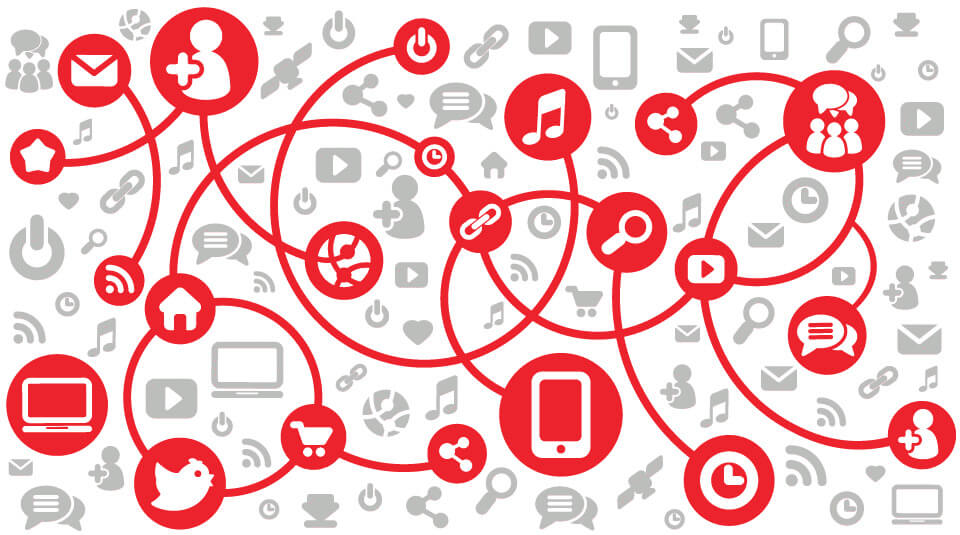
Whether it is browsing through the hotel’s website for more information, checking out reviews on OTAs and social media, or exploring exclusive deals, your guests are getting smarter and you should be too.
NB: This is an article from Hotelogix
An Omni-channel customer experience allows users to easily navigate across multiple online channels and mobile apps. This allows your users to reach you irrespective of the device used, or the channel preferred. Reading ratings and reviews, comparing prices, scrolling through social media, or even booking on OTAs, your guests are expecting a standard, consistent and exceptional experience at every stage of the travel cycle.
It is for this reason that most hotels have learned to recognize the importance of creating a top-notch omnichannel customer experience. However, it may be challenging for hoteliers to develop the right marketing strategy to promote it. So, we decided to break it down for you
Subscribe to our weekly newsletter and stay up to date
What is Omni-channel Experience?
According to a survey by Harvard Business Review, 73% of consumers prefer to go through multiple channels when shopping. The same applies to hotel guests. An average guest today reaches out to at least 4 different touch-points before finalizing their hotel stay. It is therefore crucial for hotels to have a presence across multiple channels- from their own website to social media and online travel agents.
Omni-channel approach focuses on creating multi-channel sales and marketing strategies. The goal of this approach is to create a seamless guest experience throughout the guest cycle irrespective of where, when, or on what device the guest chooses to make a booking from.
What Defines a Good Omni-channel Customer Experience?
There are 3 key metrics by which we ascertain a good omni-channel customer experience.
1. Convenience
How easy is it for guests to find your hotel online? Are they able to find all the information they need?
Convenience is not a luxury- it’s a need. Hotels need to make it easy for guests to find all the required information, and make a booking by spending the least amount of time.
2. Consistency
Do you maintain a strong online presence? Do you respond to reviews consistently? Are you active on your social media?
Consistency is key, especially when it comes to communication. Creating unique experiences and marketing those experiences through a unified brand presence across multiple channels is the simplest way to grow.
3. Communication
Can customers reach you easily? Are you trained to handle their concerns and grievances? Do you reach out to loyal customers?
In this digital age, customers are using social media as a medium for communication. Therefore, they expect to be heard and recognized by the brands they are loyal to. Reaching out to your audience constantly helps you develop a strong brand image. A positive brand image and reviews are useful to generate higher ROI.
Simple Ways to Build an Omnichannel Customer Experience Strategy:
1. Be Smartphone Friendly
The first step in developing an omnichannel customer experience is creating a mobile experience. According to a report published by Search Engine Watch, 72% of users prefer a mobile-friendly website. A majority of people have confirmed that they use their mobile phones to search tourist sites and make bookings while on a trip. So, if you want to improve your sales, your goal should be to optimize for mobile. Start with using a responsive theme for your website. Adding large visuals of your hotel’s rooms, amenities and surroundings can grab the attention of your potential guests. A simple search bar and uncomplicated navigation will also help your users find what they are looking for.
2. Focus on the Customer Experience First
It is impossible to build an omnichannel customer experience without your customers. At its core, customer experience is all about personalization. A new study by Internet Retailer has confirmed this – 40% of buyers are more likely to transact with retailers who personalize the shopping experience across channels. To design a positive customer experience, you will need data. A simple way to gather data by integrating social login (Facebook, Google). If you have been in the business for a while, use the data you have collected. Analyzing this data will help you create travel personas for your guests and deliver an experience that beats your competitors.
3. Engage with Customers Across all Channels
If you are targeting your customers using social media, it is important to actively engage with them. This is a great technique to build trust in your brand and build an audience. Developing a customer relationship will also ultimately referrals. Over 90% of consumers would recommend a brand after interacting with it via social media. 64% of Twitter users and 51% of Facebook users are far more likely to buy the products of brands they follow online. If you haven’t already, set up your social media. Run contests and promotions to produce more user-generated content. Respond to the common questions on Google to boost your SEO. Acknowledging your negative reviews on OTAs with empathy lets your audience know that you are real and you care.
4. Invest in Data Management
As part of their survey, Retail Systems Research Institute found that 54% of marketers have a tough time establishing a consistent omnichannel customer experience. This problem arises since the data of customers is scattered across multiple channels. The best way to overcome this is by standardizing all the information being collected from a variety of social networks. This will not only maximize the potential of personalization but also improve productivity. Organized user data makes it easier to scale marketing efforts and target the right customers at the right time.




